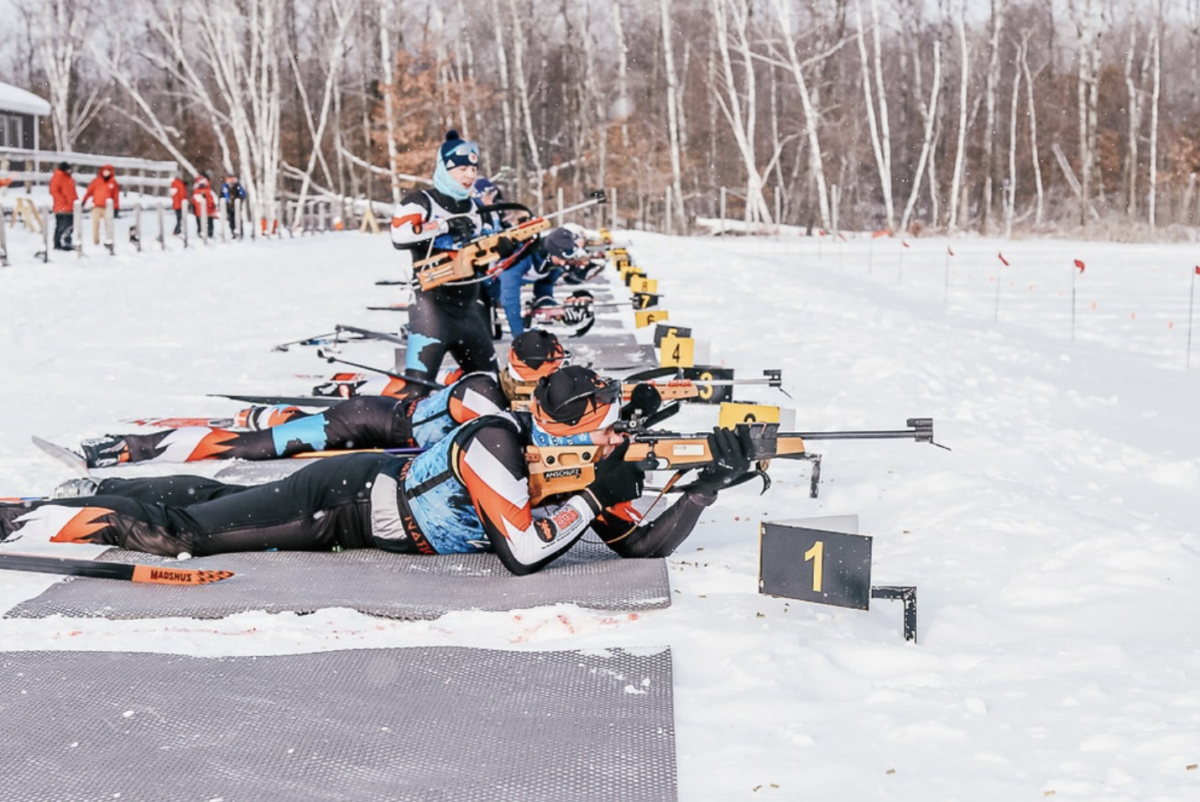Biathlon is an underrepresented winter sport that has been part of the Winter Olympics since 1960. One part cross-country skiing, one part shooting, the sport requires both aerobic endurance and technical accuracy. Athletes compete in sprint, relay, or longer individual courses up to 20 km of cross-country skiing, and will shoot at 5 target stations standing or laying down (prone). Each target is only 11.5cm wide (4.5 inches) and the hit diameter is 4.5cm wide (1.8 inches). The shooting portion is scored in terms of hit or miss–if the shot does not land in the hit diameter, it is a miss and a 150m penalty lap is done. The first athlete to cross the finish line wins.
Because biathlon requires both aerobic efficiency and marksmanship, the training for this sport is specific to the skills required. If an athlete goes too fast while skiing, their elevated heart rate can cause them to miss the targets. However, having high aerobic efficiency will allow the skier to be faster without sacrificing shooting accuracy. This style of training is being used more often in today’s biathletes due to the rise in popularity of endurance testing like VO2 max and lactate threshold. These two performance tests are relatively new compared to their sports; however, they are being used in most endurance sports, from Ironman triathlon to football to cross-country skiing.
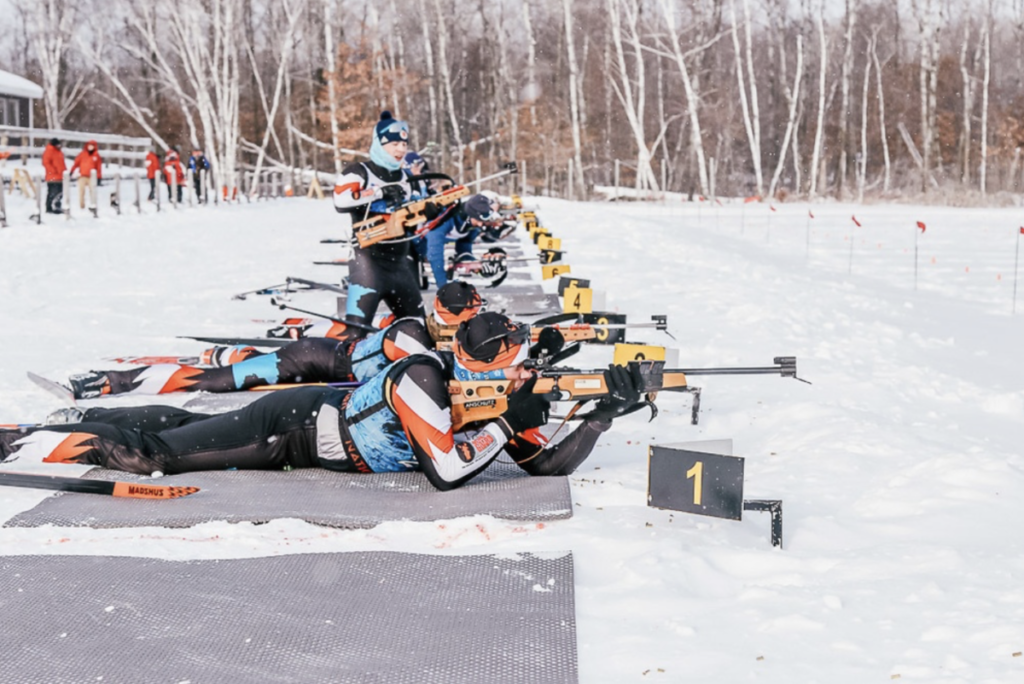
VO2 max refers to the maximum amount of oxygen one is able to utilize during a specific exercise. The term was first coined in the 1920s as scientists began to establish a connection between cardio-pulmonary functions and muscular work. It took decades for sufficient research to be done across the United States and Europe; however, it is important to recognize that this research was first done in Scandinavian countries in the 19th century. In 1955, though, VO2 max testing became standardized to control for biological stressors post WWII–it was not yet used in athletics. In 1973, it was officially proven that higher oxygen consumption efficiency of runners was directly proportional to faster times, and since then VO2 max has been a popular tool amongst coaches and athletes.
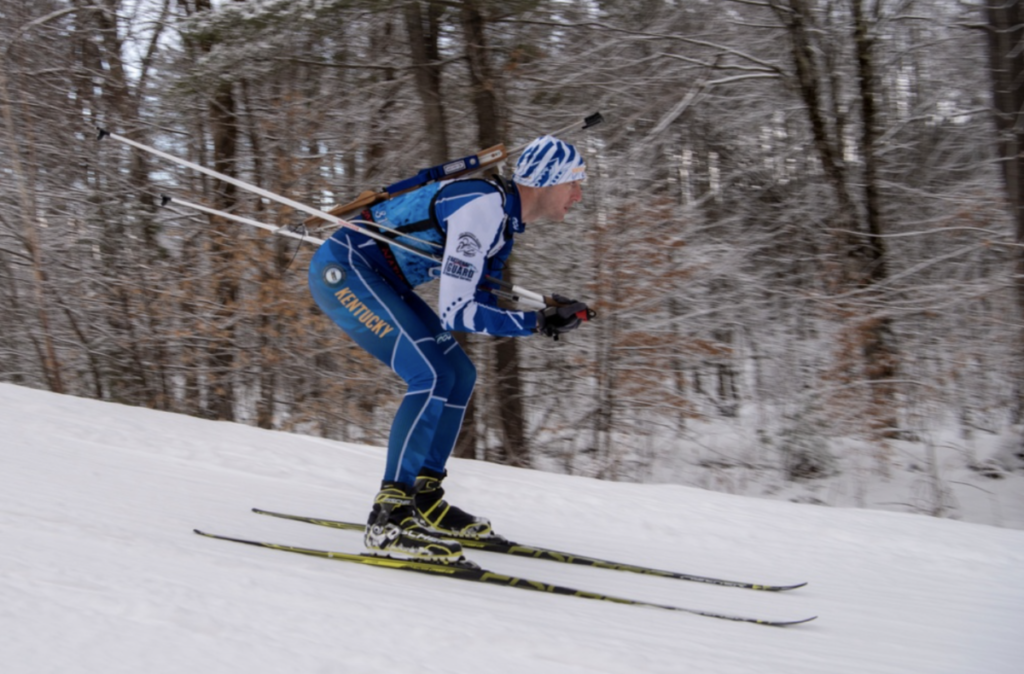
Lactate threshold is the maximum effort an athlete can put into exercise without significantly increasing the level of lactic acid in their blood. It is essentially the tipping point when your body can sustainably work vs. provoking fatigue and increasing muscular lactic acid production. Today lactic acid tests can be taken throughout training using small blood samples (a finger or ear prick) that can be read within minutes using a handheld device. Lactic threshold was first studied in the Scandinavian countries around 1910 using the first bicycle ergometer, but it wasn’t until 1980 that a Norwegian scientist was able to explain blood lactate accumulation as a response to intense work. Today hundreds of academic papers have been published crediting the importance of these physiological parameters with regards to performance. They are actively used in every sport requiring cardiovascular strength across the globe.
Because biathlon is a time scored event, efficiency is paramount to good performance. The general skiing course is about 50% uphill and most olympic level biathletes are competitive in elite open cross-country skiing. Skiing time makes up over 60% of their total racing time, so speed is crucial to the outcome. Additionally, shooting targets lasts approximately 25-30 seconds, and in that time, athletes’ heart rates fall from 90% of maximum heart rate (HRMAX) to 65% HRMAX. In the Pyeongchang 2018 Winter Olympics, shooting accuracy was between 94-97%. Because of the penalty system for missed shots, shooting time (including penalty laps) made up 35-50% of the overall time for sprint and individual races. While speed is important, the ability for a biathlete to focus their mind and body during shooting is just as crucial.
There are two main strategies in biathlon shooting: hold and timing. Hold strategy is when an athlete stabilizes the aiming point as close to the center of the target before shooting. The timing strategy is when an athlete focuses on controlling their speed as they approach the target to perfectly time triggering the rifle with their advance to the target. A study on the Finnish national biathlon team established the relationship between aiming strategy and exertion. Before any exercise, each athlete created a baseline accuracy by shooting 5 rounds at rest. Athletes were then tasked with a 2×5 minute race pace effort at 95% of their HRMAX. Immediately after each of the 5 minutes, they took 5 standing shots at targets that were 50m away. Lactate tests were done right after each shooting simulation and postural sway was measured. Postural sway is the muscle movements that keep your body standing upright. Postural sway increases significantly when blood lactate levels exceed the aerobic threshold and can contribute to loss of shooting accuracy in biathlon as they cause excessive body movement. The results of this study showed that the aiming strategy does not affect the results significantly. But, after the race simulation, accuracy plummeted, indicating that postural sway caused by elevated heart rate, blood lactate levels, exertion, etc decrease athletes’ performance.

To help reduce the effects of postural sway, finding a good respiration cycle can be crucial in stabilizing the body. Control of breathing rhythm can be exerted to help slow the heart rate and increase mental focus and clarity. Decreased respiration is generally associated with better aim. However, in order to accomplish this, the athlete must be able to have some control over their heart rate. They can not be over their VO2 max, which decreases focus, ocular coordination and increases postural sway. A 2019 Romanian study on elite junior biathletes found that by pre-regulating heart rate before race simulations, athletes were able to have better shooting accuracy and their average max heart rate after each lap was lower. Incorporating breath control practice also decreased mean heart rate and improved accuracy. An earlier study on the United States Olympic biathlon team in 1992 found that as heart rate increased, accuracy and precision for both standing and prone positions decreased. However, the results were only statistically significant when the athletes were standing, indicating the underlying importance of body wobble- standing athletes had much, much higher wobble after more intense exercise.
As was seen on the US Olympic team, postural sway is most directly influenced by exertion, which can be measured in terms of VO2 max and lactate threshold. Today, these biological parameters can be measured in a race simulation environment in which athletes ski on an artificial track or treadmill. Hydraulic artificial tracks made of plastic and rubber surfacing allow cross-country skiers to simulate race conditions of up to a 20º incline and 10º decline and are being used for consistent training and biological parameter testing. The facility can measure power output, speed, heart rate, O2 consumption, blood lactate levels and is also equipped with video feedback to optimize training in terms of aerobic fitness and technique. Using the artificial track to practice has significant fitness benefits. It was found that after these training facilities were introduced and used consistently, performance went up about 2.5% across most biomechanical parameters.
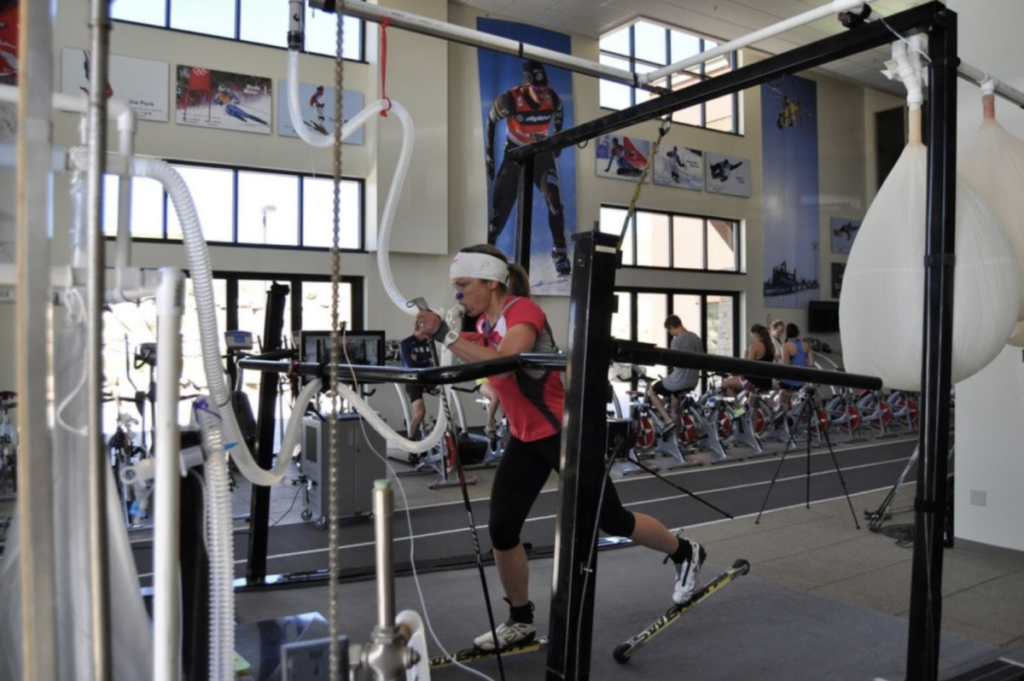
The other simulation environment is the roller step ski test. Similar to an FTP ramp test, skiers use a wide belt treadmill with modified roller skates that look like skis. They “ski” three minute intervals or steps. After each interval, the speed of the treadmill is increased exponentially with each step until the athlete can no longer keep up with the treadmill. The results of this test typically indicate lactate threshold, VO2 max, HRMAX , and power. The Swedish national cross-country ski team in 1994 participated in a study to measure blood lactate accumulation during a 5 lap race simulation. VO2 max, heart rate, and blood lactate were recorded after each lap and after each uphill portion. It was found that the average blood lactate levels following the uphill portions of the race simulation were 10.6 mM. The majority of this lactic acid accumulation was seen after the first uphill portion, but the highest levels were recorded immediately after the finish. It was also found that there were three main factors contributing to higher lactate accumulation: work load, intensity, and taxed muscle groups. In biathlon, the use of poles and carrying a rifle constitutes the majority of upper body work. After racing at high intensity, largely uphill, raising a rifle with a minimum weight of 8 lbs. and shooting accurately becomes a much more challenging feat. When blood lactate levels are too high, postural sway increases and muscle fatigue starts to set in, decreasing precision. Therefore, when training, it is crucial that athletes spend a lot of time focusing on building a strong aerobic base in order to increase their VO2 max and practice riflery under race conditions.
Endurance training volume for biathlon is similar to most endurance sports and is typically in an 80/20 split- 80% is done aerobic and 20% is higher intensity speed work. The seasonal training is also consistent with most endurance sports, starting with aerobic base building as the bulk of training and as the race season picks up so does high end speed work. Additionally, 60% of the endurance focused training includes shooting. During their season, high performing athletes fire about 200,000 rounds. Only 30% of shooting practice is done at rest to focus on technique and fine motor skills, the rest is done under competition conditions. Additionally, hypoxic training is also used when high stakes competitions approach. Altitude training camps have been shown to better athletes’ performances after returning to sea level by increasing levels of hemoglobin (a protein found in red blood cells that transports oxygen to muscles), which increase the aerobic threshold. A study in 2013 found that at the end of a 20 day training camp at 2900 meters, hemoglobin in the blood increased 17% and VO2 max increased 2%. Over time, as technology has allowed for year round race-like conditions and training routines have been honed and tailored to the athletes needs, the aforementioned biological parameters have improved significantly.
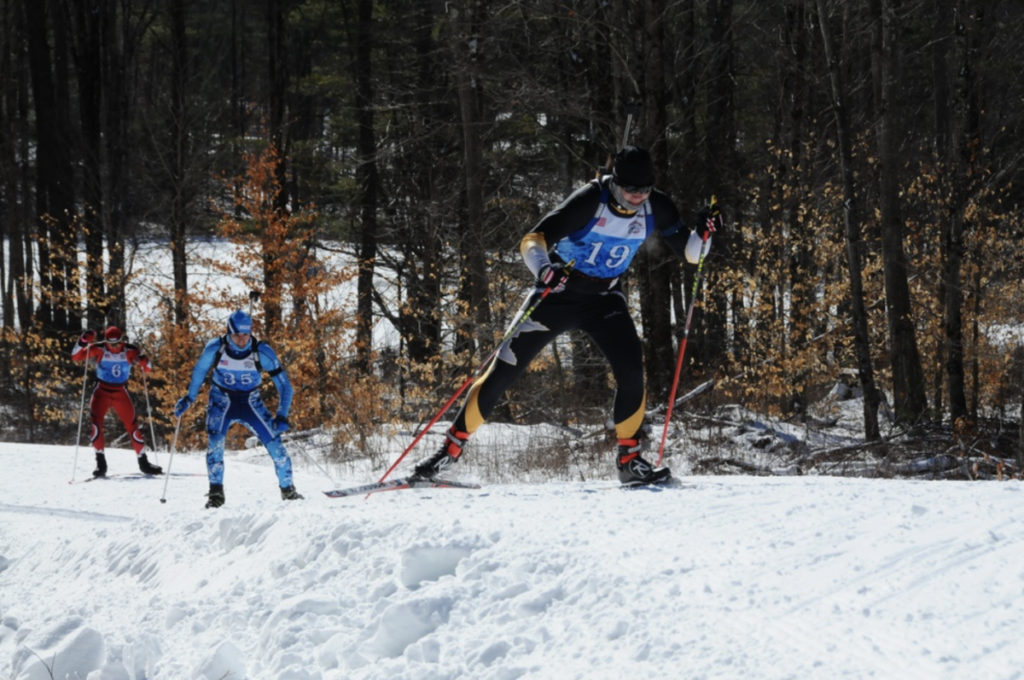
Since 1967, Norwegian male and female medaling biathletes’ VO2 max has increased 10% and 13%. The VO2 max averages in 2015 were 84.3 ml/kg and 72.6 ml/kg, respectively. Additionally, when the Norwegian elites’ data was last released in the 1960s, the VO2 max difference between men and women was 30%, but in 2015 it was 15%, proving that with the increase of technology, biological parameter testing, and targeted training, athletes (and women in particular) are getting fitter. The 15% difference is mainly due to physiological differences between the two sexes, which include heart size and hemoglobin mass, indicating that the difference is unlikely to narrow in the future.
Because of the technology available today, it seems as though performance abilities will increase exponentially. However, discriminating between technological advancements (ie. faster skis) and human capability is crucial in determining the future of many sports, including biathlon. Performance standards should be measured using athlete data rather than reliability on faster technology. As endurance testing is expanded to measure additional variables, we can only expect for different physiological facets of a biathlete’s performance to be uncovered and eventually perfected to make each athlete a biological machine.
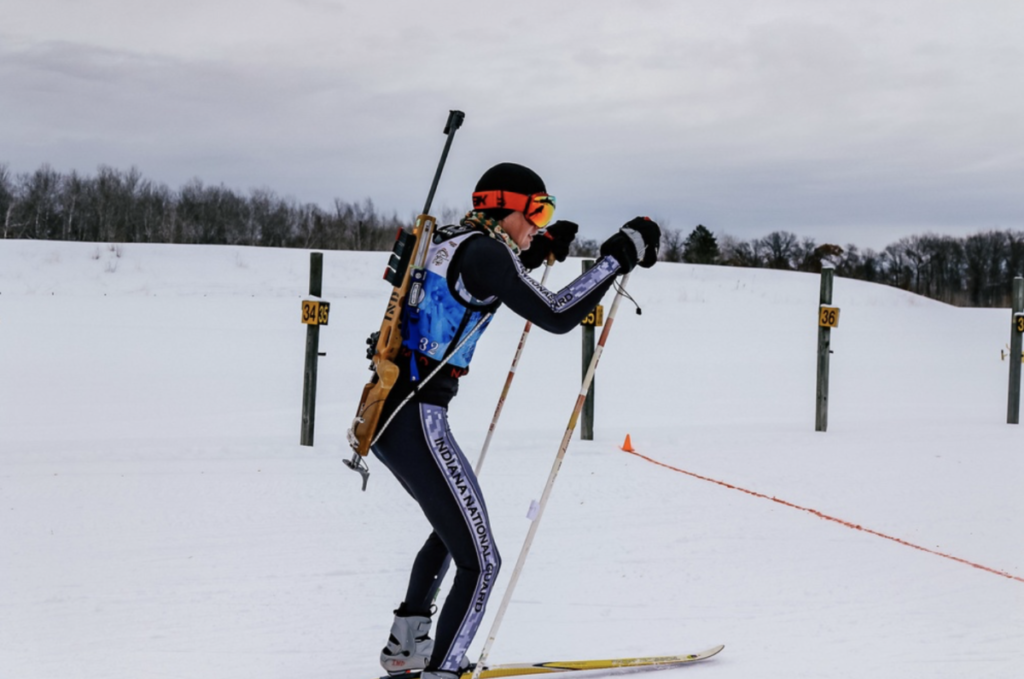
Acknowledgements:
Thank you to Mrs. Holly Brooks of the United States Olympic Team for allowing me permission to use her photo and to the US. Department of Defence for giving me access to their photo archives.
Sources:
Carmichael Training Systems. “The Performance Benefits of Lactate Threshold Testing and Training.” Accessed April 2023. https://trainright.com/the-performance-benefits-of-lactate-threshold-testing-and-training/
Faster Skier. “For First Time in Nearly 50 Years, Norwegians Release VO2 Max Data.” Accessed March 2023. https://fasterskier.com/2015/11/for-first-time-in-nearly-50-years-norwegians-release-vo2max-data/#:~:text=For%20First%20Time%20in%20Nearly%2050%20Years%2C%20Norwegians%20Release%20VO2Max%20Data,-Chelsea%20LittleNovember&text=Norwegian%20biathlete%20Ole%20Einar%20Bjørndalen%27s,of%20other%20Norwegian%20biathlon%20medalists.
Hoffman, M. D., Gilson, P. M., Westenburg, T. M., and Spencer, W. A. “Biathlon Shooting Performance After Exercise of Different Intensities.” International Journal of Sports Medicine 13, no. 3 (1992): 270-273.
Kornexl, E. Science and Skiing. London: Taylor and Francis, 2013.
Köykkä, M., Ihalainen, S., Linnamo, V., Ruotsalainen, K., Häkkinen, K., & Laaksonen, M. S. “Aiming Strategy Affects Performance‐Related Factors in Biathlon Standing Shooting.” Scandinavian Journal of Medicine & Science in Sports 31, no. 3 (2021): 573-585.
Laaksonen, M. S., Finkenzeller, T., Holmberg, H. C., & Sattlecker, G. “‘The Influence of Physio Biomechanical Parameters, Technical Aspects of Shooting, and Psychophysiological Factors on Biathlon Performance’: A Review.” Journal of Sport and Health Science 7, no. 4 (2018): 394-404.
Laaksonen, M. S., Jonsson, M., & Holmberg, H. C. “The Olympic Biathlon– Recent Advances and Perspectives after PyeongChang.” Frontiers in Physiology, no. 9 (2018): 796.
Mygind, E., Andersen, L. B., and Rasmussen, B. “Blood Lactate and Respiratory Variables in Elite Cross‐country Skiing at Racing Speeds.” Scandinavian Journal of Medicine & Science in Sports 4, no. 4 (1994): 243-251.
Pelin, B. I., Bondoc-Ionescu, D., and Turcu, I. “Optimizing Technical Shooting Skills at the Shooting Range by Adjusting the Intensity of the Effort to Junior Biathletes.” Discobolul– Physical Education, Sport and Kinesiotherapy Journal 58, no. 4 (2019): 32-36.
Seiler, S. “A Brief History of Endurance Testing in Athletes.” Sportscience 15 (2011): 40-88.
Sietsema, Kathy. Wasserman & Whipp’s Principles of Exercise Testing and Interpretation. Philadelphia: Wolters Kluwer, 2021.
The Sporting News. “What is biathlon? Explaining origin, rules, history of Winter Olympic event that blends shooting, skiing.” Accessed April 2023, https://www.sportingnews.com/us/olympics/news/biathlon-rules-winter-olympic-shooting-skiing/v7xpbika8jijg2tlsee3how9

